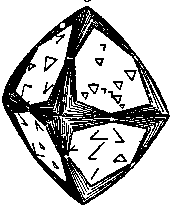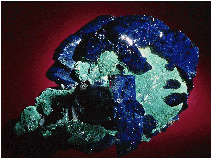
Mineral Collecting For Beginners

I've been collecting minerals for six years now and I know how hard it is for beginners to identify the minerals that they find on a trip. All the references don' t show what the mineral looks like in the ruff all the time except for the one's that are a prime specimen. Sometimes you want to go and look for a new specimen but you don't know what to look for and you scratch your head wondering what they look like. There are times when you pick up a rock and wonder what is this mineral? How do I find out what I have found? There are some real great books on this subject. Like {GEMSTONES OF THE WORLD} and {ROCKS AND MINERALS.} One of the first things you want to have is a field guide to Identification-Rocks and Minerals. Here is a checklist you can go by for the things you need to go collecting Minerals.
A good field guide to identify your finds so you know what they are!
A good rock hammer! ( ESTWING is what I use )
A good crack hammer of about 3 to 5# s! ( ESTWING is what I use )
Good rocks chisel or even a set of chisels to get your specimens out with! (ESTWING is what I use)
Most important a pair of safety goggles to protect your eyes!
A shoulder bag or back pack to put your specimens in!
A jug of water so you don't get dehydrated!
Squeeze bottle to wet the piece to identify it better!
The Rockhound's Handbook! The Gem Trails guide series
A Small brush and even a toothbrush will work!
A whisk broom!
A good set of screens of
A compass so you don't get lost!

You might think of other things to. If you are planning to go way in to the wilderness you need a good radio or cell phone (in many places a cell phone will not work). And most importantly make sure your car or truck is in top condition, and take extra parts like fan belts, radiator hoses, and duck tape (don't laugh it may save your life some day when you're out there and your heater hose springs a leak)
The first thing you want to do is to plane your trip out. Get a good map of where you plane to go (a topographical map is best) Decide the route you want to take and the best and easiest way to get there. If it is on privet land always make sure you get permission first before you enter there land or you might end up in jail. Contact the USFS or BLM for there regulations on mineral collecting. Most importantly let some one know where you are going in case something happens to you or you brake down so they can find you.
Collecting minerals is fun but also it can be hard work but rewarding. I'd suggest that if you've never done anything like this is to find a rock club or go to a fee site so you can learn how to do things and recognize gems and minerals. Go to museums and study the minerals. Look at them so you know what they look like in the field, study them and study them some more. Get to know what they look like in the ruff so you can spot them faster. Always ask questions, it's the only way you'll learn about and how to collect minerals.


Here's a list of books that you would what to get for your collection. These are very helpful on finding locations and fee sites.
THE ROCKHOUND'S HANDBOOK, FEE MINING ADVENTURES AND ROCK HUNTING EXPEDITIONS IN THE US, METEORITES, AUDUBON GUIDE TO FAMILIAR ROCKS AND MINERALS, ROADSIDE GEOLOGY SERIES BY STATE, HOW TO TUMBLE POLISH ROCKS INTO GEMS, RECREATIONAL GOLD PROSPECTING FOR FUN AND PROFIT, THE LAKE SUPERIOR AGATE BOOK, GEM TRAILS SERIES BY STATE. There are more books then this that you can buy at any Book Store and online.
I don't claim to be a expert on this subject I just want to help out the new comers to this field of fun and joy in collecting minerals and gems. If you have any questions you can e-mail at removed do to spammers using it
Thank you for your time Carl Mauritz - Gemhunter
P.O. BOX 233
Tigerton, Wisconsin 54486-0233
Phone # 715-535-2818